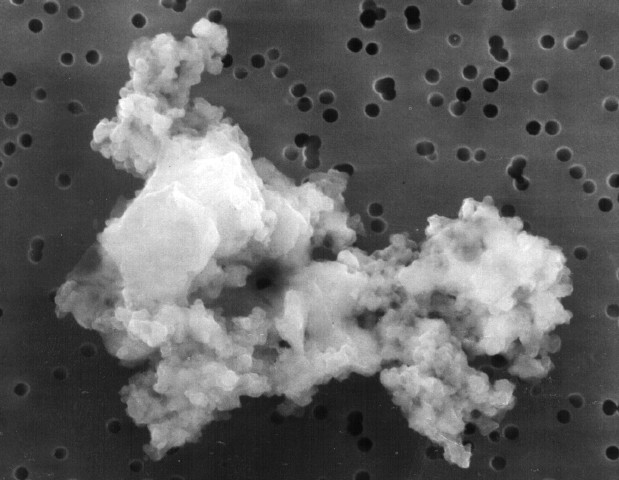
|
Credit: NASA
Explanation:
The dust that pervades our
Solar System is not the dust that pervades our homes.
Solar System dust comes from
comets and
asteroids, whereas
house dust is most likely lint or dead cells.
Pictured above is a piece of
interplanetary dust caught by a high-flying
U2-type aircraft.
It likely originates in the early days of our
Solar System, being stored and later ejected by a
passing comet.
The particle is composed of
glass,
carbon, and a conglomeration of silicate
mineral grains.
It measures only 10
microns across, a tenth the width of a typical
human hair.
NASA's
STARDUST mission,
launched in 1999,
is scheduled to pass through the tail of Comet Wild 2 in 2004 and
return many more
interstellar dust samples to
Earth in 2006.
|
January February March April May June July August September October November December |
| ||||||||||||||||||||||||||||||||||||||||||||||||
NASA Web Site Statements, Warnings, and Disclaimers
NASA Official: Jay Norris. Specific rights apply.
A service of: LHEA at NASA / GSFC
& Michigan Tech. U.
Based on Astronomy Picture
Of the Day
Publications with keywords: comet - dust - interplanetary dust
Publications with words: comet - dust - interplanetary dust
See also:
- APOD: 2025 February 5 Б Comet G3 ATLAS Setting over a Chilean Hill
- APOD: 2025 February 2 Б Comet G3 ATLAS Disintegrates
- APOD: 2025 January 28 Б Comet G3 ATLAS over Uruguay
- APOD: 2025 January 26 Б The Many Tails of Comet G3 ATLAS
- Comet G3 ATLAS: a Tail and a Telescope
- APOD: 2025 January 21 Б Comet ATLAS over Brasilia
- APOD: 2025 January 20 Б Comet ATLAS Rounds the Sun
